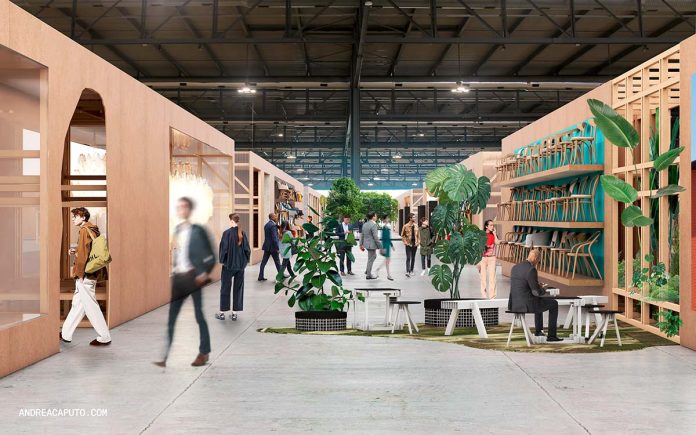Great expectations for the opening of the Supersalone. Not just because the event symbolically sanctions the restart of the design machinery after months of sporadic pacing. But also because of the event in its own right, which was subject to much discussion in the preliminary phases. What will it be? We’ll find out very soon. It’s time. The Supersalone is just around the corner, with six days (Sunday 5th to Friday 10th) of events, exhibitions, presentations. Augmented, as usual, by the maxi-circuit of the Fuorisalone, which this year provides an even more important adjunct for Milano Design Week (starting on Saturday 4 September).
Four pavilions at the fair in Rho will host over 1900 projects (exhibiting brands, self-producing designers, young talents who took their degrees in 2020/2021), but also a variegated public program with over 40 illustrious voices (architects, innovators, visionaries, entrepreneurs, artists and politicians), a film series in collaboration with Milano Design Film Festival, four food courts created by Identità Golose and enlivened by new personalities of Italian cuisine, and a large exhibition of the ADI/Compasso d’Oro. All open to the public from the very first day and throughout the event, with tickets available online at 15 euros.
While the restart seems to be official (the first key term), safety (the second) comes in its wake, with stringent guarantees to protect the health of exhibitors and visitors. Hence the use of masks and obligatory social distancing, along with the need to have a Green Pass or EU Digital COVID Certificate for entry. There will also be four hubs for rapid testing (Porta Est, Porta Sud, Porta Ovest and Cargo 1, 22 euros).
This edition of the Salone also pays attention to sustainability (the third and last key word), which should come as no surprise given the attitudes of the curator, Stefano Boeri.
The solutions, however, are rather surprising, starting with the rental and reuse of construction materials to prevent waste. The spaces set aside for companies have been designed to reduce the need for support structures. All the materials and components in the display layout designed by Andrea Caputo – long parallel partitions, which also help to organize circulation of visitors – and by Stefano Boeri Interiors – for the communal areas – deploy a limited quantity of chipboard panels (1230 m3), made with 100% recycled wood, which will then be inserted in the production cycle, with a circular approach. Paper has been banned: there will be no brochures or informative print materials.
The green vision also extends to the planting of 200 trees donated by Salone del Mobile.Milano to Forestami, some at the Porta Est entrance, some inside the pavilions, slated for replanting at Parco Nord Milano.







